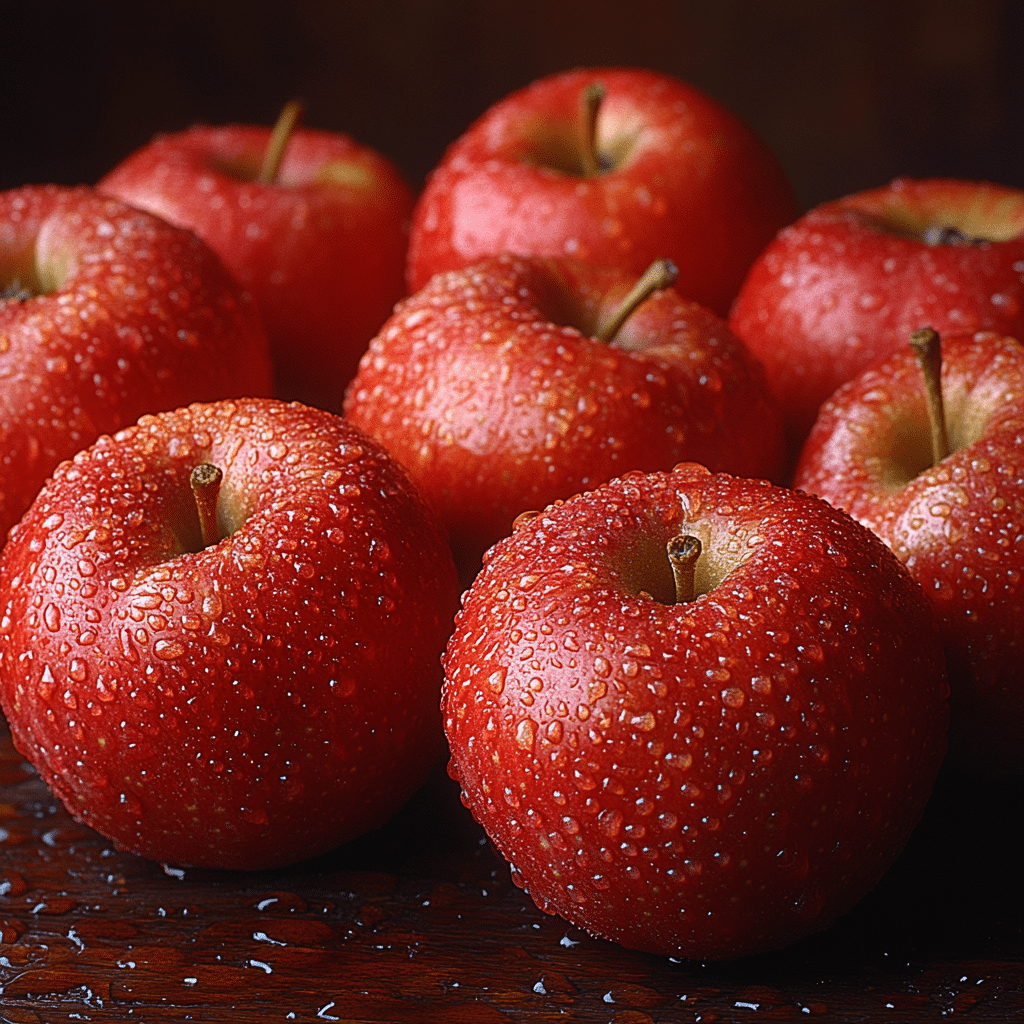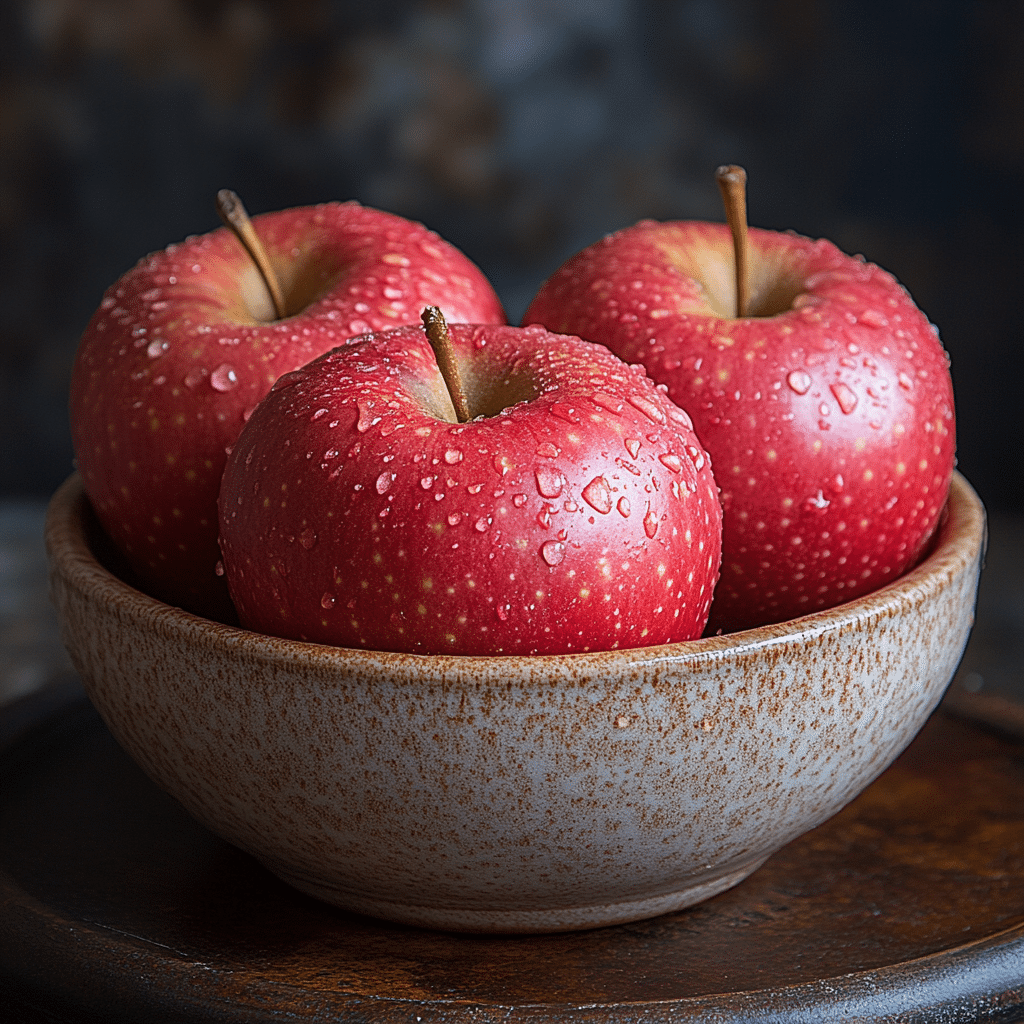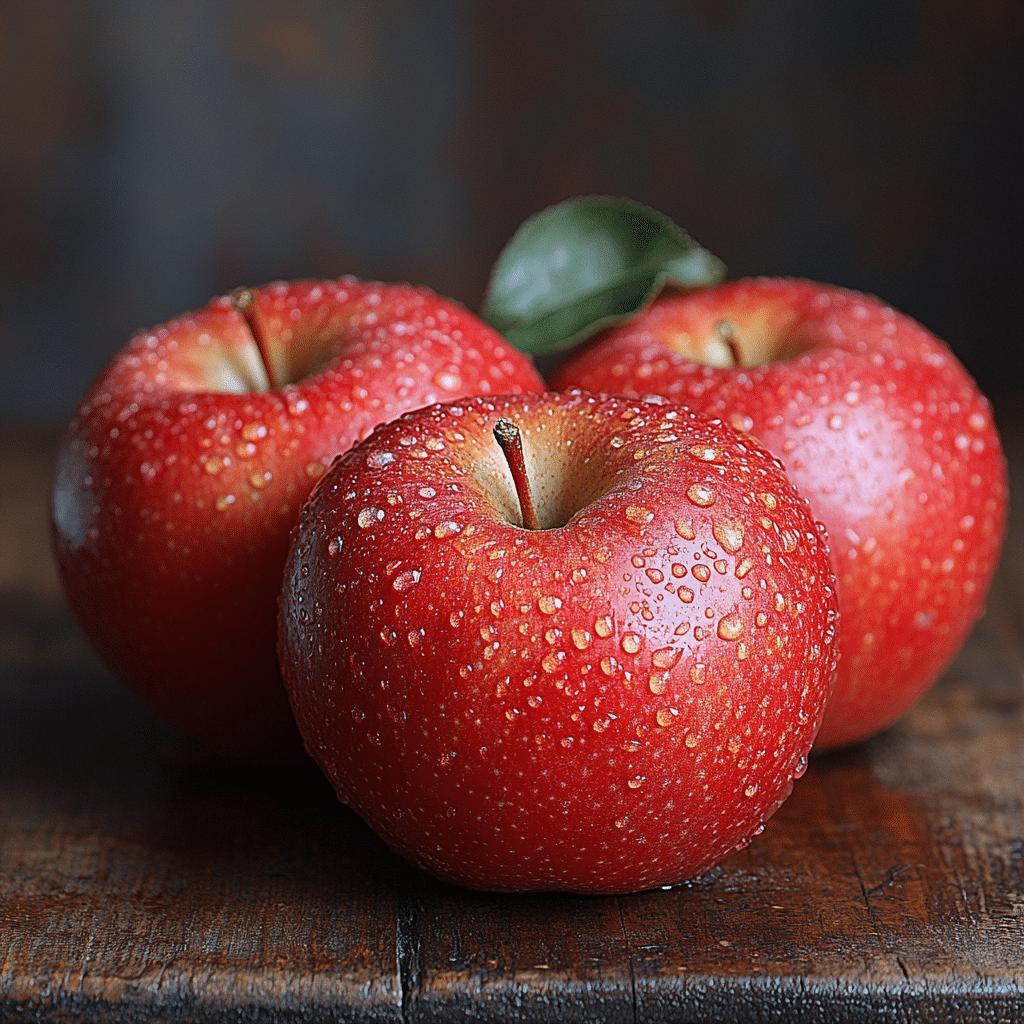The Timeless Appeal of Macintosh Apples
A Brief History of Macintosh Apples
Macintosh apples, fondly known as McIntosh apples, come with a rich heritage that dates back to the early 19th century. Discovered by John McIntosh in 1811 on his farm in Ontario, Canada, these apples swiftly captured the hearts of apple enthusiasts with their unique sweet-tart flavor profile. Over the centuries, the popularity of these apples has only grown, maintaining their status as a favorite among countless apple lovers around the globe.
Growing Conditions and Harvest Season
Macintosh apples flourish in cooler climates, which makes regions like New York, Vermont, and parts of Canada their primary growing areas. They thrive in well-drained soil, benefiting from a balanced amount of sunlight and water. The harvest season for Macintosh apples typically spans from late September through October, rendering them an iconic autumn fruit. As a result, numerous orchards see a spike in visitors looking to relish the fall experience and pick their own apples.
The Sweet and Tart Flavor Profile
One bite into a Macintosh apple, and you’ll instantly recognize its appeal. Boasting a flavor that strikes a delicate balance between sweet and tart, these apples promise a crisp and tender texture. This distinct taste makes them incredibly versatile, suitable for solitary enjoyment or a myriad of culinary uses. The Macintosh apple’s flavor and texture profile keep it at the forefront of various recipes and seasonal dishes.
Versatility of Macintosh Apples in Culinary Uses
Baking with Macintosh Apples
Macintosh apples reign supreme in the baking world. Due to their high moisture content, they break down beautifully, making them optimal for sauces, pies, and tarts. Renowned chefs such as Claire Saffitz of Bon Appétit frequently recommend them for their balanced acidity and sweetness, perfect for a range of baked goods. Their ability to complement sugary doughs and buttery crusts elevates any apple-based dessert to new heights.
Apple Sauce and Cider Perfection
When it comes to apple sauces and ciders, Macintosh apples are the unrivaled star ingredient. Vermont Cider Co. and TreeTop Inc. often turn to Macintosh apples for their remarkable breakdown consistency and sweet-tart flavor. Their flesh softens quickly during cooking, requiring minimal to no additional sweeteners. The result is a naturally sweet, flavorful cider or sauce that can delight any palate.
Salads and Raw Enjoyment
The juicy, crisp nature of Macintosh apples makes them a delightful addition to salads and an excellent snack on their own. Celebrity chef Gordon Ramsay frequently includes sliced Macintosh apples in his fall-themed salads. Paired with nuts and cheeses, they provide a perfect zing that complements their zest. Whether enjoyed raw or in a dish, Macintosh apples never fail to deliver a refreshing bite.

| Attribute | Description |
| Name | McIntosh (also known as McIntosh Red or “Mac”) |
| Origin | Canada |
| Description | Medium-to-large apple with a streaky red blush that has a hint of purple, round and slightly ribbed, with many small light lenticels decorating the skin |
| Color | Bright red, often with green and white areas |
| Flesh | White to green-tinged, dense, aqueous, fine-grained, crisp but soft and tender consistency |
| Taste | Sweet, juicy, tart with a bit of spice, and a hint of wine (often referred to as “vinous”) |
| Best Uses | All-purpose; suitable for both cooking and eating raw, especially good as a dessert apple that breaks down quickly and requires a shorter cook time |
| Primary Growing Regions | Eastern Ontario, British Columbia’s Okanagan Valley, and the northeastern United States |
| Popularity | Most popular apple cultivar in Eastern Canada and the northeastern United States during the 20th century, but popularity has waned in favor of hardier modern cultivars |
| Market Presence | Still prevalent in commercial markets but production has decreased due to soft, easily damaged flesh |
| Historical Significance | The mother McIntosh tree died in 1908; commemorative plaques mark its original location |
| National Symbol | National apple of Canada |
| Modern Comparisons | Compared to other apples, McIntosh is on the tart end of the spectrum, with Fuji, Gala, Honeycrisp, and Red Delicious being sweeter |
| Rival Varieties | Honeycrisp, Granny Smith, Pink Lady |
| Unique Features | Known for its attractive dark red or crimson colors and a crunchy bite |
| Commercial Standing | Continues to be one of the top 10 apples sold in North America |
Nutritional Benefits of Macintosh Apples
Packed with Essential Nutrients
Macintosh apples are much more than a tasty treat—they’re a nutritional powerhouse. Each apple brims with vitamins A and C, fiber, and antioxidants. These essential nutrients promote good vision, bolster the immune system, and aid in digestion. Adding Macintosh apples to your diet ensures you’re not only indulging in delicious fruit but also fueling your body with vital nutrients.
Low Caloric Content
With only about 80 calories per apple, Macintosh apples are an excellent diet-friendly option. Weight loss experts like Michael Mosley advocate for including more apples like Macintosh in your diet due to their low-calorie yet filling properties. They make for an ideal snack, keeping hunger at bay without leading to an unwarranted calorie surplus.
Antioxidant-Rich
The skin of Macintosh apples contains quercetin, a potent antioxidant linked to anti-inflammatory and heart health benefits. Regular consumption of these apples can contribute to overall wellness. By integrating Macintosh apples into your diet, you not only enjoy a succulent fruit but also give your body a health-boosting advantage.
Comparing Macintosh Apples to Other Popular Varieties
Macintosh vs. Honeycrisp
While Honeycrisp apples are cherished for their extreme juiciness and loud crunch, Macintosh apples offer a softer bite and a more complex flavor range. Brands such as SweeTango have created hybrid varieties by crossing Honeycrisp with other apples, yet the unmodified, authentic charm of Macintosh remains unmatched. The subtle wine-like hint in their flavor profile sets them apart.
Macintosh vs. Gala
Galas are celebrated for their mild, straightforward sweetness, which makes them favorites among children and those who prefer less tartness. However, Macintosh apples cater to those who appreciate a more dynamic taste experience. This makes them the preferred choice for culinary professionals and home cooks. Their versatility and richer flavor spectrum render them suitable for an array of culinary creations.
Macintosh vs. Granny Smith
Granny Smith apples are known for their tart and firm nature, commonly used in baking and savory dishes. In contrast, the Macintosh apple strikes a fantastically balanced sweet-tart flavor profile, offering more versatility. Well-known cooks like Ina Garten often recommend Macintosh apples for recipes requiring this perfect balance, underscoring their multifaceted utility in the kitchen.

Preserving Macintosh Apples: Best Practices
Storage Tips
To extend the shelf life of Macintosh apples, store them in a cool, dark place. A crisper drawer in the refrigerator set to high humidity is ideal. Proper storage can help them last up to two months, making it possible to enjoy their fresh taste long after the harvest season.
Freezing for Later Use
Freezing Macintosh apples is an excellent way to enjoy them throughout the year. Slice the apples, blanch them, and store them in freezer bags. They retain their quality exceptionally well and are perfect for future baking needs. This method ensures you can savor their unique flavor profile any time you wish.
Making Jams and Preserves
Turning a bumper crop of Macintosh apples into jams and preserves is another rewarding option. While companies like Stonewall Kitchen offer top-notch apple jam, creating your own at home can be a gratifying experience. Homemade jams allow you to capture and savor the essence of Macintosh apples all year round, adding a personal touch to your pantry.
An Enduring Favorite in the Apple World
Macintosh apples, with their perfect blend of sweet and tart flavors, have carved a permanent spot in the hearts of apple enthusiasts. Whether used in baking, cooking, or simply enjoyed fresh, their versatility and nutritional benefits make them an all-purpose fruit that transcends time. From historical roots to becoming a staple in modern kitchens, Macintosh apples continue to inspire and satisfy, truly proving that sometimes, the classics never go out of style.
Whether you’re a professional chef or a home cook, this iconic fruit’s adaptability and taste make it an invaluable addition to any culinary endeavor. So next time you’re wondering Should I sell My house now or what to snack on while playing a game of free pyramid solitaire, remember that a Macintosh apple is always a great option!
For those curious to learn more about the national interest rate, read thoroughly on how it could impact your decision How much Should I put down on a house. Whether you’re seeking more information on Wolverhampton Council Jobs, planning a visit to Kiln Park tenby, or just keen to check the Real Sociedad vs. Inter Milan stats, this article provides delightful insights on Macintosh apples and assures that nothing complements your research better than a freshly picked Macintosh apple!
Macintosh Apples: The Sweet and Tart All-Purpose Fruit
A Brief History
Did you know Macintosh apples have been around since 1811? It all started in Ontario, Canada when a farmer named John McIntosh discovered the first tree of this now revered apple variety. Over 200 years later, Macintosh apples have found their way into homes and orchards across North America. Their unique blend of sweet and tart flavors makes them ideal for everything from pies to cider.
Fun Facts and Trivia
Macintosh apples hold a special place in the apple kingdom. For example, they’re one of the few apple varieties to have a computer named after them! That’s right—the iconic Apple Macintosh computer got its name from these versatile fruits. Speaking of versatility, did you know that Macintosh apples are great for both snacking and baking? Their balanced flavor profile makes them a popular choice among chefs and home cooks alike.
Another intriguing tidbit is the role these apples play in the Pornos de Ninas case. Similarly, their influence extends beyond the kitchen; their seeds even have traces of cyanide, though you’d need to munch on hundreds of seeds to feel any effects. So, next time you’re enjoying a crisp Macintosh apple, you’re not just savoring a healthy snack—you’re biting into a fruit with an intriguing history.
Growing and Harvesting Macintosh Apples
Growing Macintosh apples is straightforward yet fascinating. They’re known for their early ripening, usually ready for harvest by mid-September. These apples have a knack for thriving in cooler climates, making them a staple in Canadian orchards. A little-known fact is that Apple’s core isn’t just a tasty treat but also vital for the cultivation of future trees. Their seeds, although minor in comparison with other apple varieties, have an incredible lineage tied to them.
While they’re relatively easy to cultivate, paying attention to frost dates is essential. A late frost can seriously hamper the yield, reducing the overall harvest. So, when you’re crunching on a Macintosh apple, remember the meticulous care and climatic dances required to bring this fruit from the orchard to your table. For those planning to enter apple farming, Macintosh apples offer a good start without too much hassle—although, the mortgage originator might have different thoughts!
Their Role in Popular Culture
Finally, let’s touch on the cultural impact of Macintosh apples. Beyond inspiring tech giants, they’ve made their way into various aspects of daily culture. For instance, their distinctive flavor and texture have given chefs creative freedom to produce culinary delights. Interestingly, the apple’s name pops up in unlikely places, like the real Sociedad Vs inter milan Stats, drawing a curious connection between sports and fruit!
From farm fields to tech moguls, Macintosh apples have indeed left a mark. Every apple has a story, and the Macintosh variety’s tale is one of innovation, resilience, and a touch of sweetness and tartness that keeps us coming back for more.

Are Honeycrisp and McIntosh apples the same?
Honeycrisp and McIntosh apples are not the same. Honeycrisp is a large apple with a cheerful red color and more of an orange tint, while McIntosh apples have a streaky red blush with a hint of purple. The taste and texture are also different, with McIntosh being juicy and tart with a bit of spice, and Honeycrisp being sweet and crisp.
Why are there no McIntosh apples in the stores?
McIntosh apples are less prevalent in stores now because growers have reduced production due to their soft and easily damaged flesh. Modern, hardier apple varieties are favored, which has led to fewer McIntosh apples being available on the market.
Where are Macintosh apples grown in the US?
In the US, McIntosh apples are primarily grown in the northeastern states. They are also cultivated in eastern Ontario and British Columbia’s Okanagan Valley.
Are Macintosh apples still available?
Yes, McIntosh apples are still available. They are still cultivated and found in commercial markets, though they are less popular than in the past.
What is the closest apple to McIntosh?
The closest apple to McIntosh in terms of taste and texture is the Cortland apple. Both varieties share similar flavors and are good for cooking and eating raw.
Why are McIntosh apples so popular?
McIntosh apples are popular due to their sweet, juicy, and slightly spiced flavor. They have a classic apple taste with refreshing acidity, making them an all-purpose apple good for both eating fresh and cooking.
Does Aldi sell McIntosh apples?
Aldi’s product selection can vary by location, but they do occasionally sell McIntosh apples. It’s best to check with your local store for availability.
What are McIntosh apples best for?
McIntosh apples are best for both eating fresh and cooking. They’re particularly well-suited for making applesauce and pies because they break down quickly when cooked.
Should McIntosh apples be refrigerated?
To keep McIntosh apples fresh longer, they should be refrigerated. This helps maintain their crispness and extends their shelf life.
What is the season for Macintosh apples?
The season for McIntosh apples generally begins in late September and can extend into the winter months. Availability might vary depending on the region and weather conditions.
What is the only truly native apple in the United States?
The only truly native apple to the United States is the crabapple. All other apples, including the McIntosh, were brought over by European settlers.
Why is apple called Macintosh?
The apple is called McIntosh after John McIntosh, who discovered the original tree in Dundela, Canada, in 1811. The name has been carried on to honor its origins.
Why is it hard to find Macintosh apples?
It’s hard to find McIntosh apples because production has decreased. Growers prefer hardier and more durable varieties, making McIntosh apples less common in the market.
When did they stop making Macintosh?
The mother McIntosh tree, which started it all, died in 1908, but cultivation and production of McIntosh apples continued well into the modern day.
Does Macintosh still exist?
Yes, McIntosh apples still exist. They’re still grown and available, though they are not as prominent as they used to be due to the rise of newer apple varieties.



